May is the predecessor of our summer season and offers visitors many benefits and perks, including the conditions of the roads, making driving in Iceland in May so simple and safe that a road trip will probably be the best way to explore the island.
That’s why we decided to create this guide. It doesn’t matter whether you’re an amateur or a seasoned campervan pro; this guide will tell you everything there is to know about road-tripping around Iceland in a camper. It gives you valuable local insights, tips, and advise so you can come and have the adventure of a lifetime in Iceland in May.
Why May is a Great Month for a Camper Trip in Iceland
As a shoulder month, May in Iceland is a bit of a Goldilocks situation in only the best way possible, with general feedback being things like “not too cold” and “not too crowded.” Visiting Iceland in May offers many perks, including the following:
- Falling conveniently right before our busy peak season starts, May means no pesky peak season crowds. So, you can rest assured that it won’t feel like the Hunger Games when visiting some of our famous attractions or having to book accommodation, transport, or activities.
- Similarly, you won’t need to fear any peak season pricing, making May one of the cheaper months to visit Iceland.
- In a camper, your options for overnight stays are legion, with most campsites around the country being open (some close during our colder periods on the island). But not only does this mean super affordable stays here on the island, it also means you can use the Camping Card to increase those savings even further! For just €179, a family of 2 adults and up to 4 children will have access to many campsites around the country for up to 28 days, and it even includes discounts when you refuel!
- Daylight hours have come a long way from our mid-winter 4 hours, and you can once again plan a jam-packed trip itinerary and road trip with more than enough daylight hours to spare. You’ll start off with 16 hours of daylight each day in early May, but it steadily grows to 20 hours by the end of the month.
- May is also the sweet spot for nature lovers since the island becomes alive with special guests. The Iceland Puffins come “home” for the breeding season, and migratory whales come hand out with our local ocean giants all along our coastline.
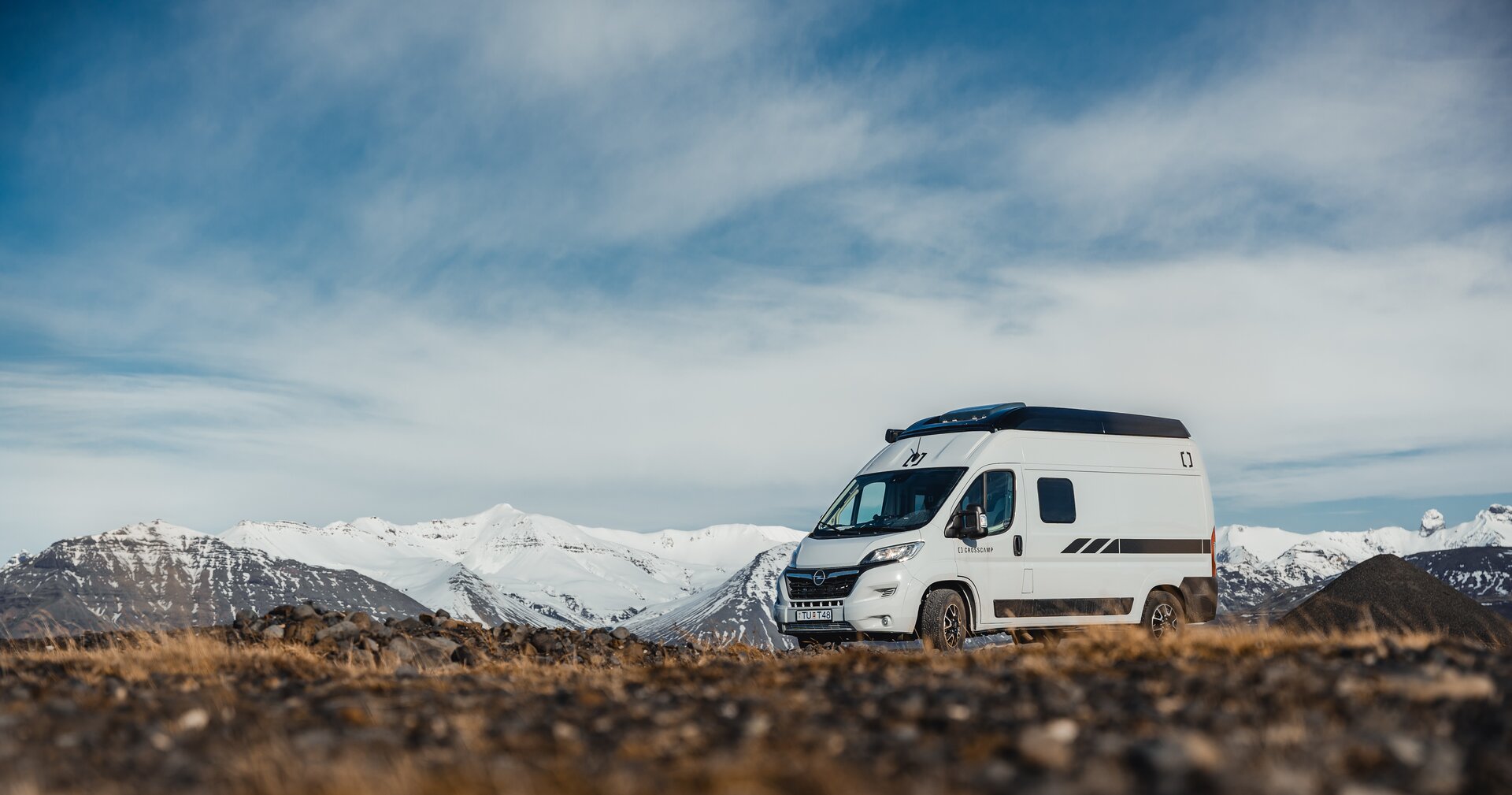
Weather and Road Conditions in May
The two factors that will have the most impact on your driving in Iceland in May are the weather and our road conditions (which go pretty hand-in-hand). So, whether you’re wondering “What is the weather like in Iceland in May?” or “What roads in Iceland will be accessible in May?” then read on as we give you an overview of both:
Daylight Hours and Changing Weather Conditions
As a shoulder month, you can expect the weather in Iceland in May to reflect this transition period. The island is slowly moving into our warm summer season, so May becomes a bit like a “tester” month.
You can expect our more extreme weather elements to also go on summer break (so no ice, blizzards, and 35+ kilometer an hour wind), and temperatures are steadily rising. You can expect temperatures to range between 2 and 10 degrees Celsius (36 to 50 degrees Fahrenheit). But please note that our local saying says, “You can expect all four seasons in a day here in Iceland.” When it comes to daylight hours, you can expect around 17 hours by early May.
What starts out as a sunshine day with clear skies can turn overcast just an hour later, and then back to clear skies in another hour, so you’ll need to be prepared for anything. The weather and our ever-increasing daylight hours make the perfect combo for all sorts of exciting outdoor adventures here in Iceland, including hiking and canoeing.
What Roads are Open in May? (And Which Aren’t)
With weather conditions having changed for the better and the last remnants of our winter snow and ice having dissipated, road conditions when driving in Iceland in May are pristine. You have your paved, main roads and routes that are incredibly well-maintained all throughout the year, offering piece-of-cake driving.
These include the Ring Road (aka Route 1), the Golden Circle, and the South Coast Way. Then there are our unpaved, gravel roads. Some, such as the turn-offs to our most famous sites, are also very well-maintained. However, when you start moving further away from city limits and into our more remote regions, these gravel roads can become a bit more challenging.
Still, all these roads will be open for exploration in the month of May, with the risk of sudden road closures due to the weather being practically zero. To stay up-to-date with the latest developments on the roads and any unforeseen circumstances and warnings, please check out Umferdin, especially before heading out. You should also download the SafeTravel app. The F-roads in Iceland, however, are an entirely different kettle of fish.
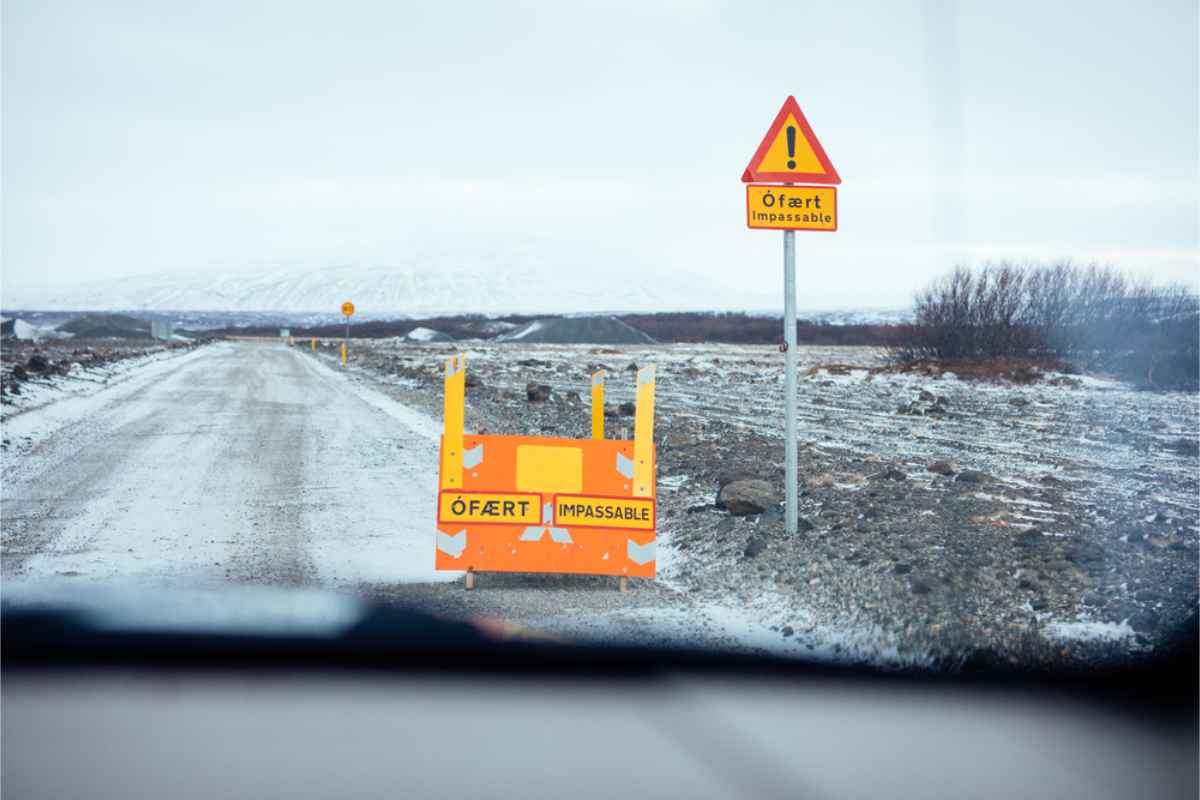
F-Road Access and Highland Warnings
The F-roads in Iceland are closed annually during the colder months of the year. They already start closing around mid-September and only start reopening late May (wink, wink, nudge, nudge). The F-roads are our rough-and-tough mountain roads here in Iceland that are characterized by being extremely rocky and uneven, with numerous obstacles such as river crossings.
Due to the conditions of these roads, you’re only allowed to drive them with 4x4 vehicles (by law!). The F-roads feature predominantly in the Westfjords and the Highlands, which makes exploring these regions incredibly difficult when these roads are closed. However, as you can see from the dates mentioned, if you plan your road trip for late May, you may (no pun intended) catch these roads open again, opening up a world of exploration in Iceland.
But please take note, these roads are kept closed for good reason, so with or without a 4x4, it’s not worth the risk to chance it and proclaim it as open (by the powers invested in yourself by yourself). You will either put yourself in jeopardy or get a fine that will have your bank manager clutching at her pearls!
Renting a Campervan in Iceland for May Travel
If this is your first time renting a campervan in Iceland for a road trip in May, here’s what you need to know:
Do You Need a 4x4 Camper?
Whether you need a 4x4 camper will depend on your trip itinerary. Consider the following when making your decision:
- If you’re planning on sticking to our paved and well-maintained roads in and around our cities and towns, a 2-wheel drive will be more than sufficient. While this may seem counterintuitive to a campervan road trip, Reykjavik boasts one of the best campsites on the island, and it sits smack-bang in the middle of the city. Many use this as a base and simply do daily excursions nearby.
- If you’re planning on taking some of our “roads less traveled,” we recommend renting a 4x4 camper. Even if you plan on only driving our well-maintained gravel roads, you never know what opportunities might arise or when adventure might come knocking at your camper door. Having a 4x4 from the get-go will allow you to always say “yes!” to these unexpected and wonderful experiences and give you the peace and mind that your vehicle will be able to take on whatever your Iceland adventure throws at it.
- Needless to say, if you’ve struck gold with a few open F-roads by late May and would like to explore our more remote regions, a 4x4 is an absolute must. If you’re caught attempting to drive an F-road in a 2-wheel drive, you’ll be in a lot of trouble (and that’s only if you’ve not already managed to get yourself in a life-threatening situation).
If your adventure takes you into the highlands, having the right vehicle is essential. Many travelers choose an F-road camper rental Iceland, as it provides the safety and flexibility needed to handle rugged terrain and unpredictable weather. With a 4x4 camper, you can explore Iceland’s most remote and breathtaking destinations with confidence and without limitations.
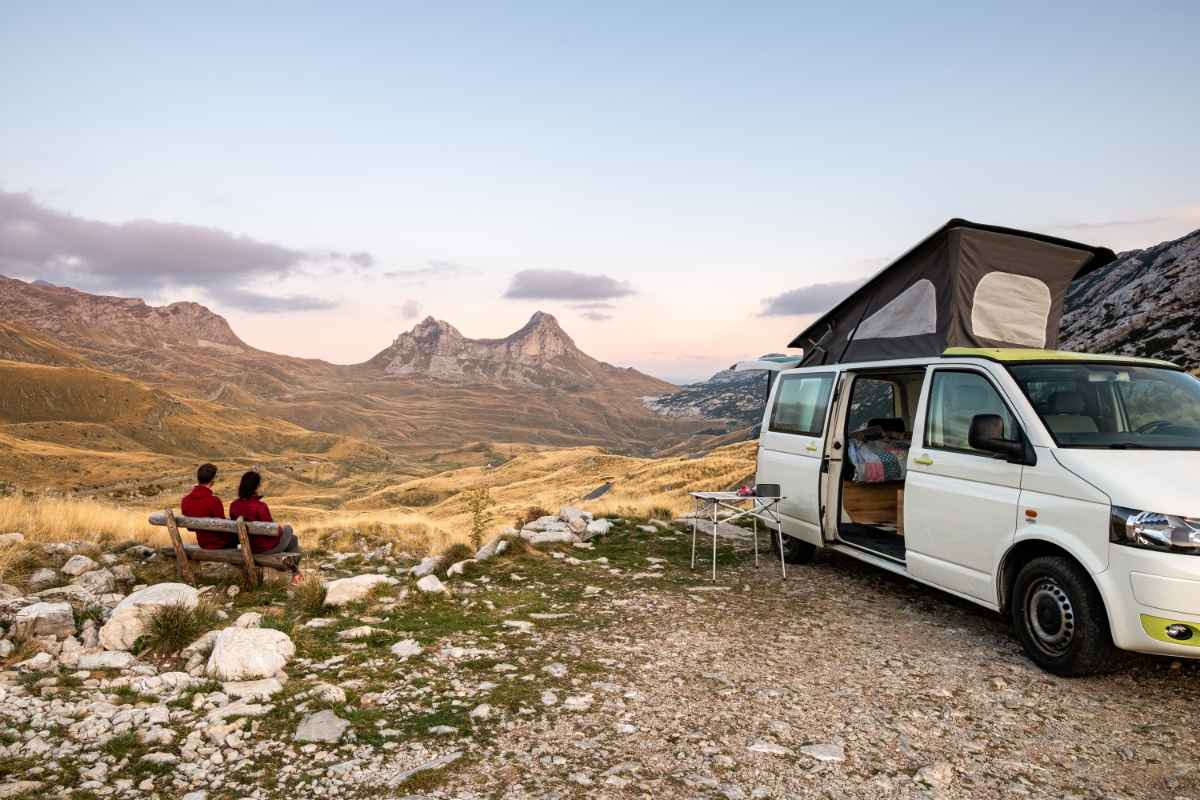
Booking Ahead and Camper Availability
We usually warn visitors planning a summer road trip to book their campers well in advance to avoid any disappointment. However, since May is such a short hop, skip, and jump away from sliding straight into summer, we do recommend that you try to book your camper at least 3 to 6 months ahead of your planned trip.
Also, you need to keep in mind that our weekends are always busier than our weekdays, so for any weekend trips, it’ll always be more important to book ahead.
Insurance Coverage for Spring Travel
Iceland has a couple of mandatory insurance policies that will already be included in your campervan rental package. These are CDW (Collision Damage Waiver) and Third Party Liability. However, it is possible to add a few insurance extras. Whether you really need any extras depends heavily on your trip itinerary. A few insurance coverage add-ons you may want to consider for spring travel are the Premium and Platinum Insurance packages, which include
Sand and Ash Protection
As the Land of Fire and Ice, you can expect plenty of remnants of past eruptions all across the island (whether from yesterday or thousands of years ago). So ash and sand (many of which are merely eroded lava sediment) are a reality throughout your time here.
Combined with our legendary winds, they can cause some damage to a vehicle, from clogged filters to sandblasting away a camper’s paint job. For those planning on traveling along our coast, where these elements are more prevalent, we highly recommend getting Sand and Ash Protection.
Gravel Protection
Gravel Protection is just what it sounds like. This will cover you for any potential damages caused by gravel, stones, or tiny rocks that are kicked up by your or others’ vehicles. It’s a must for anyone planning on exploring the island beyond the city limits.
Windscreen Protection
What many don’t know is that most insurance policies exclude damage to the windscreen (whether due to gravel, sand, ash, etc.). So, double-check your small print and get yourself add-on windscreen protection if needed.
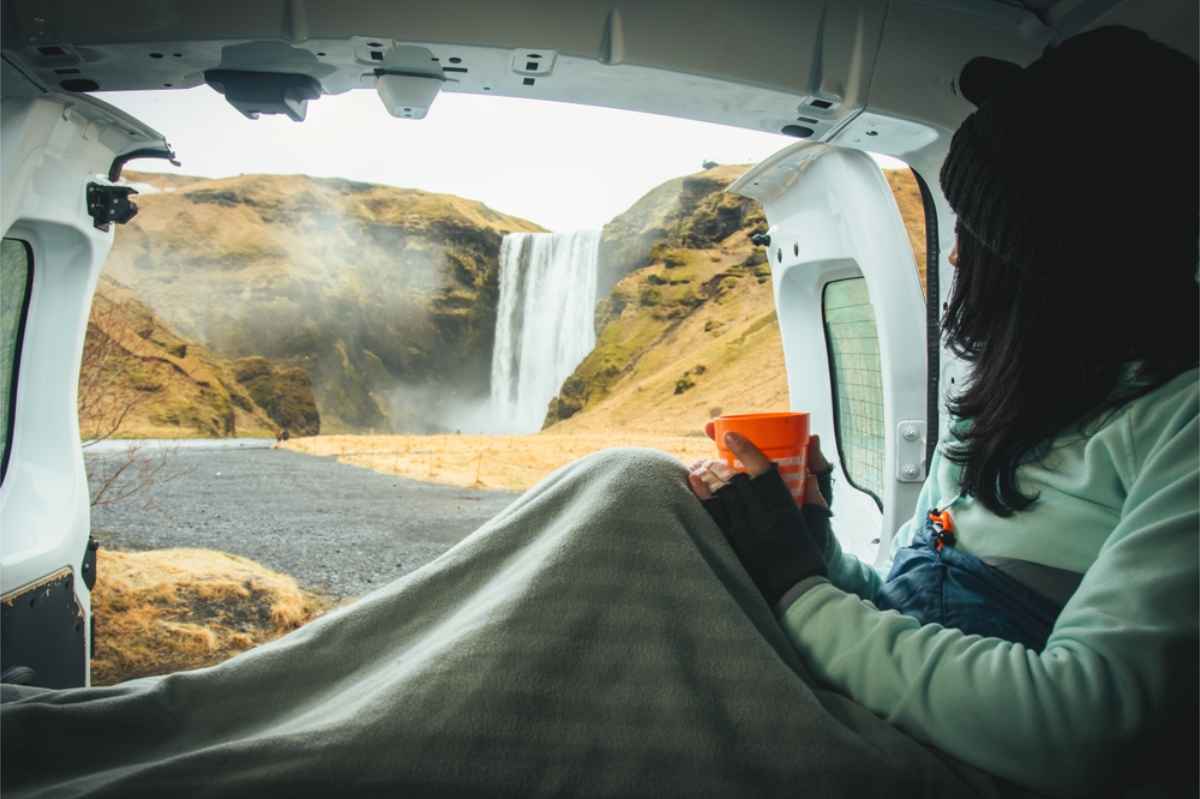
Where to Go with Your Camper in May
There are a few roads and routes you can consider exploring with your camper in May:
The Ring Road
The Ring Road is not just a popular road trip route, but also a vital piece of logistical infrastructure here on the island. This is because this paved and well-maintained loop road wraps around the island and acts as the main artery to most regions, cities, and towns here in Iceland.
With this road giving you a taster of most areas in Iceland, it should come as no surprise that this route is jam-packed with all sorts of interesting activities and famous attractions. Although you’ll be able to do a Ring Road road trip in 7 days, we recommend making it two so you can explore as much as possible without feeling rushed.
The Golden Circle
The Golden Circle is another popular paved and well-maintained loop road here on the island, although much shorter than the Ring Road. This route begins and ends in Reykjavik and also offers visitors a myriad of sights along the way.
The Golden Circle can actually be done in just one day, but we recommend setting aside at least 3 days to properly explore this route. This makes it the ideal road trip option for those with limited time on the island.
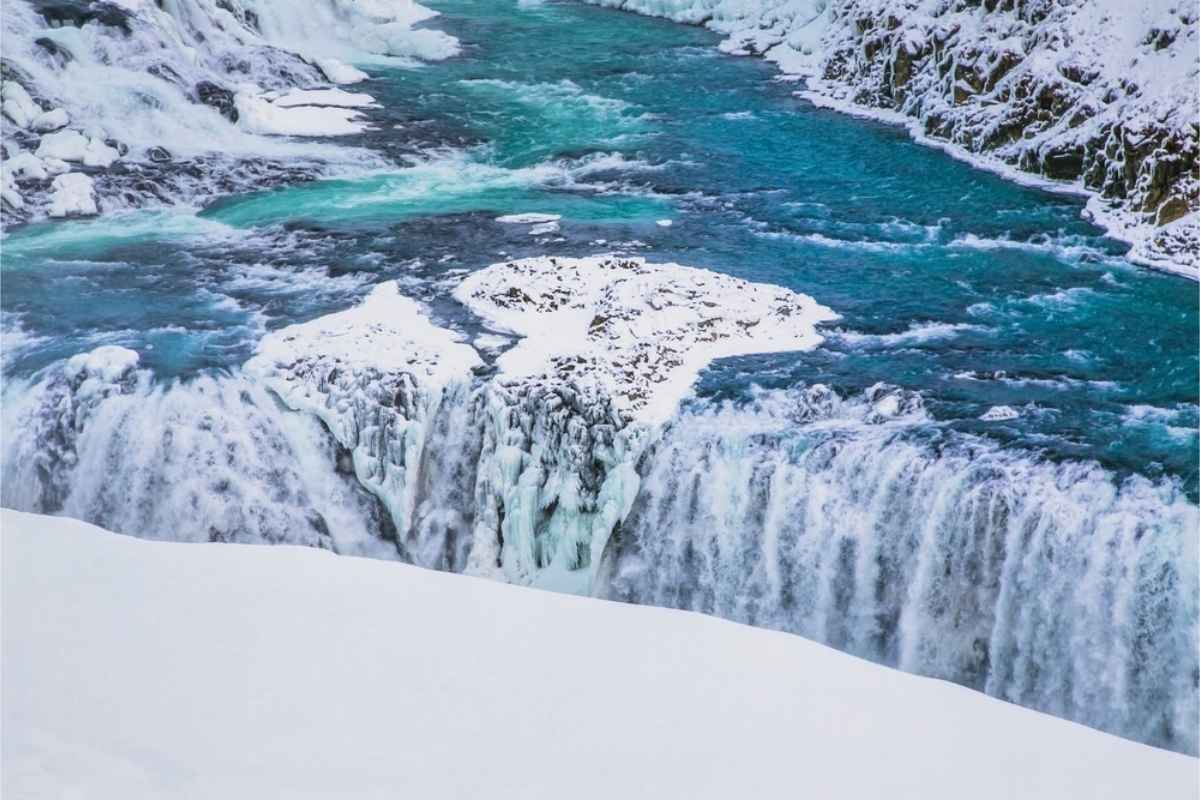
The South Coast Way
The South Coast Way is the part of the Ring Road that runs along the southern coastline, which means that it’s also a paved and well-maintained road. The South Coast Way is not just famous for its obvious ocean views, but also for its incredible watery and icy displays. From Seljalandsfoss Waterfall to Jokulsarlon Glacier Lagoon and Diamond Beach – this route has many a jaw-dropping moment.
Snæfellsnes Peninsula
Snæfellsnes Peninsula is also known as “mini Iceland.” This is because this area also offers visitors a taste of everything one can expect here in the Land of Fire and Ice. Waterfalls, glaciers, volcanoes, you name it, Snæfellsnes has got it. Since this region can also be thoroughly explored in just 3 to 4 days, it’s yet another excellent option for those with limited time on the island.
Is the Westfjords an Option?
We already mentioned that one can also find F-roads in the Westfjords. So, if the F-roads only begin to open in late May, is exploring the Westfjords even an option when traveling to Iceland in May? The answer is yes, albeit slightly limited. If you road trip the Westfjords before the F-roads open, you’ll still be able to explore a lot of the region. This is because the Westfjords essentially only have one F-road (F66) affected by the annual road closure.
That being said, the Westfjords is one of our remote regions with most roads being unpaved, gravel roads, so even though they’re not technically F-roads legally requiring a 4x4, they can be challenging to navigate so a 4x4 is highly recommended if you don’t want to get stuck or end up with an insurance claim that will take your breath away (and not in a good way!).
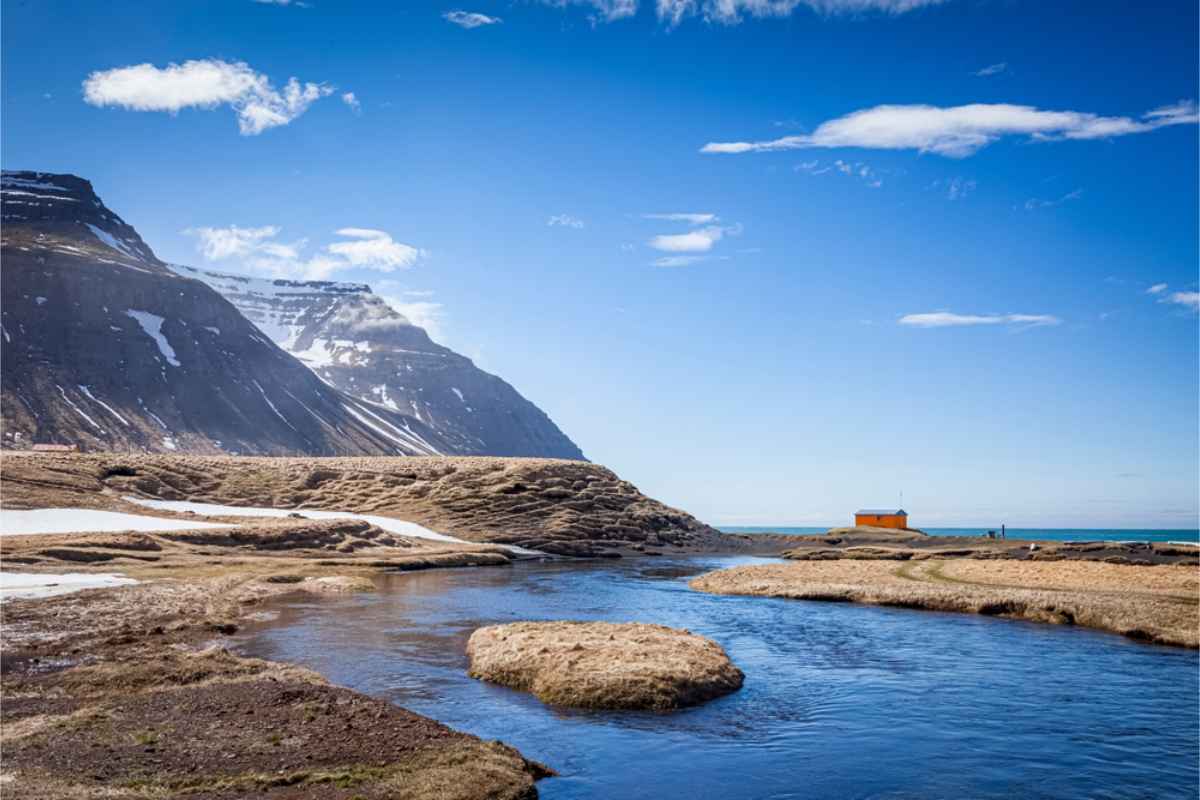
What to Do in Iceland in May on Your Camper Road Trip
As a shoulder month, May in Iceland means an interesting mix of sights and activities. You can consider the following for your trip itinerary:
Hot Springs and Pools Along the Route
You will find hot springs all over the island. This is because all the volcanic activity heats up our underground water supply. Although you can still find quite a few hot springs that are still in their natural and original settings, many are used in our geothermal pool resorts these days.
Our hot springs are open all year round, and, in fact, most locals swear by the invigorating experience of taking a dip during our colder months. Some of the popular hot spring hot spots you can consider during your trip to Iceland in May are the Blue Lagoon, the Myvatn Nature Baths, Kvika Footbath, Seljavallalaug, Fontana Laugarvatn, Gudrunarlaug, and Sky Lagoon.
Wildlife Watching: Spotting Puffins and Going Whale Watching
As we already mentioned, May means the Puffins and a few migratory whale species are calling Iceland home. To spot the Puffins, you don’t need to book a spot on a fancy tour. There are a few places on the island that you can see them.
This includes the Westman Islands (aka Vestmannæyjar), Dyrholaey Rock Formation, and Latrabjarg Cliffs. When it comes to whale watching, it’s quite a different story, of course. The best way of spotting these incredible giants will be on one of our whale watching boat tours.
Most whale-watching boat tours can be found along the harbor at Reykjavik, Akureyri, and Husavik, with Husavik being a firm favorite as Iceland’s so-called whale capital. Some of the whales you can expect to see include Minke Whales, Humpback Whales, Orcas, Sperm Whales, and even the biggest whale species of them all, the Blue Whale!
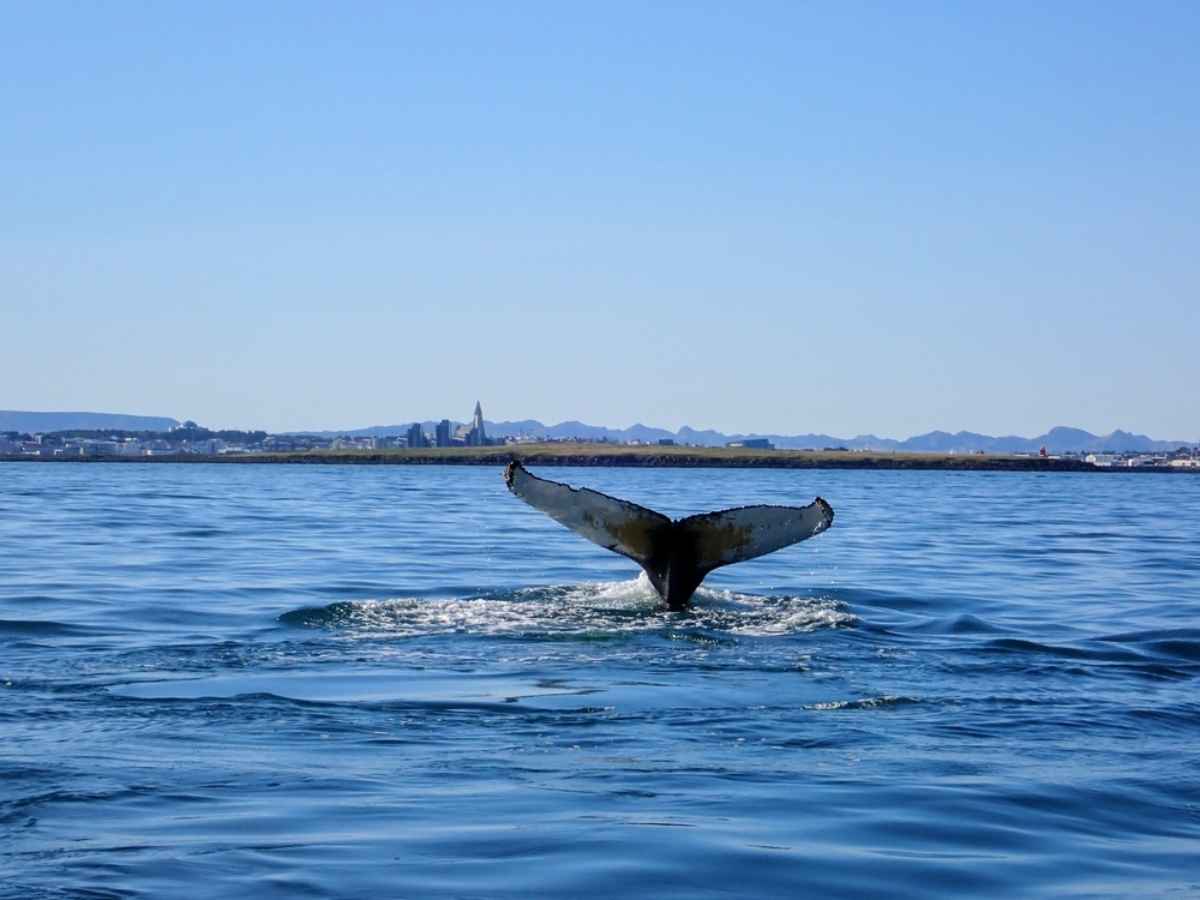
Visiting Local Events and Festivals
Icelanders love a good celebration, and as we enter a time when the weather is at its best, all sorts of events and festivals start to rev up a gear.
So keep an eye out for things such as International Workers’ Day (a public holiday on the 1st of May that evokes all sorts of celebrations across the island), the Reykjavik Art Festival, and Iceland’s Independence Day on the 20th of May, just to name a few. If you ask locals about any potential events and festivals you can add to your social calendar while there, we’re sure you’ll be flooded with invites.
Enjoying Peaceful Campsites and Nature Walks
With a plethora of daylight hours and nice weather, the outdoors is where you want to be. Enjoy some of our incredible hiking trails in our national parks, such as Vatnajökull National Park and Thingvellir National Park. All our hiking trails differ in length and difficulty, so you can be sure that you’ll find one that suits you best.
With all our campsites open, where to overnight in your camper is also not something you need to be too concerned about. And since our peak season crowds haven’t arrived yet, you’ll find our campsites very peaceful as you immerse yourself in the Icelandic landscape.
At some campsites, such as Skogar Campground, you can even expect to open your camper door to a breathtaking view of one of our famous local sights (in the case of Skogar, it’s Skogafoss Waterfall).
Campsites and Facilities in May
If this is your first time visiting our local campsites or just the first time you’ll be visiting in May, this is what you need to know and can expect:
Are Most Campsites Open Yet?
As we already touched on earlier, you will find most campsites open in May. Some may still be operating at off-season operating hours early May, but by mid-May, more than 60% of all campsites will be working at full capacity again. By late May, it’ll be 100% as campsites gear up for the influx of peak season visitors.
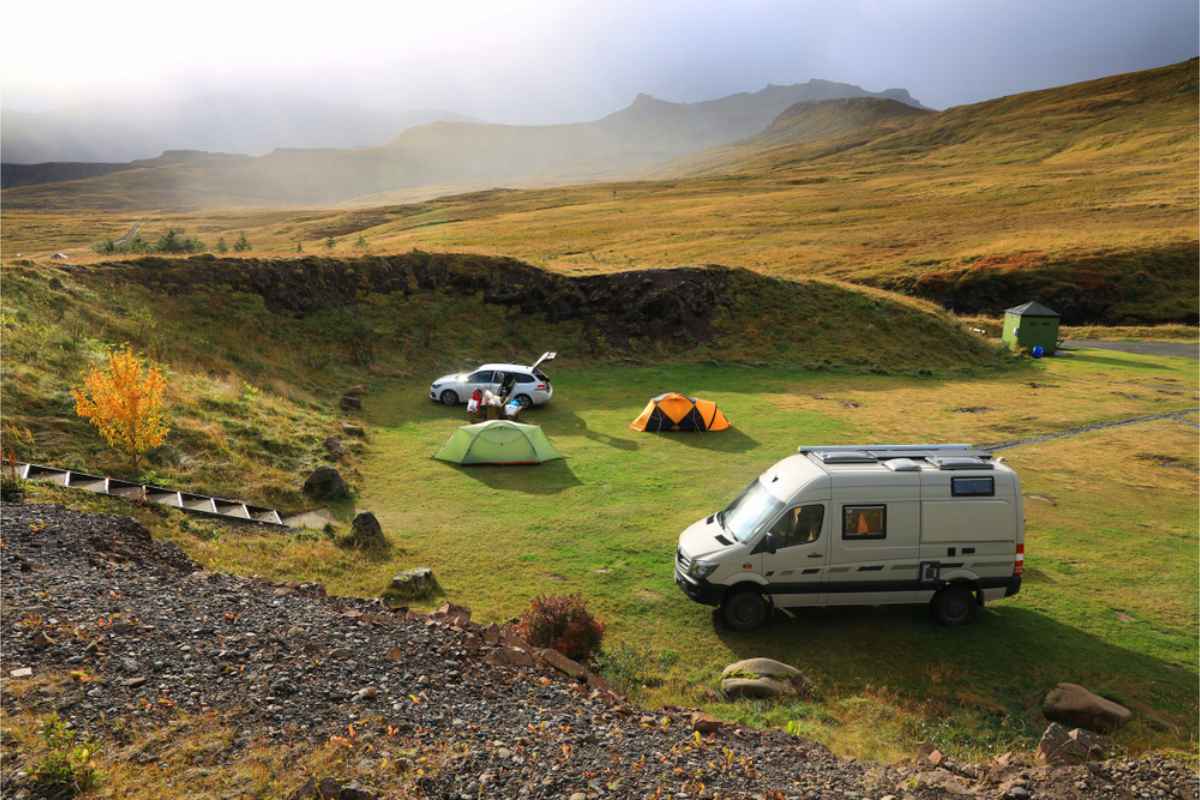
Facilities to Look for (Electricity, Toilets, Water)
Campsites here on the island can differ significantly. They can range from very primitive to absolute luxury with various additional facilities and amenities. Which you end up choosing will all depend on your personal preferences, needs, and budget. When it comes to campervan road trips specifically, there are a few facilities that you’ll need to look out for:
- Communal Kitchen Facilities (if your camper doesn’t come with a kitchen unit).
- Communal Toilets and Showers (if your camper doesn’t come with a bathroom and for number twos – trust us, you’ll get it later when you need to start cleaning).
- Electricity Connections (absolutely essential for any camper road trip).
- Waste Disposal Site (yet another essential for camper road trips).
- WiFi (for your devices, with a specific focus on planning and navigation).
Wild Camping Rules and Practical Tips
Wild camping in your camper used to be allowed here in Iceland. However, the influx of people exploring the island via camper became too much, and people couldn’t behave, failing to respect the environment or others’ property. This ultimately led to new laws being implemented in 2015, officially making wild camping illegal. That’s why you are only allowed to park or camp in a designated parking or camping spot.
Overnight parking in designated parking spots is also only allowed in parking spots with signs clearly permitting overnight parking. You are still allowed to park or camp on private property for up to 48 hours, but only if you have the explicit permission of the land owner. If not, you’re looking at a major fine or a very angry Icelander knocking on your camper door.
What to Pack for a Camper Trip in May
As a transition month and our four-seasons-in-one-day here in Iceland, we’ll give you some guidance on what to pack for your camper trip in May:
Clothing: Layering for Unpredictable Weather
You want to be ready for any weather coming your way, and the best way to do that is by layering and ensuring you always have something to take off or put on based on the circumstances. So pack thermal underwear, t-shirts, long-sleeved shirts, sweaters (fleece and wool work best to combat the cold), as well as jackets (at least 1 short and 1 long). You’ll also need to bring waterproof clothing, including a raincoat.
These items also serve multiple purposes: to keep you dry during rainfall, on wet and muddy hiking trails, and at our powerful waterfalls with their mist and spray. A pair of waterproof hiking boots with good grip will also serve multiple purposes. Finally, bring warm accessory essentials, which include warm woolen gloves, hats, and socks.
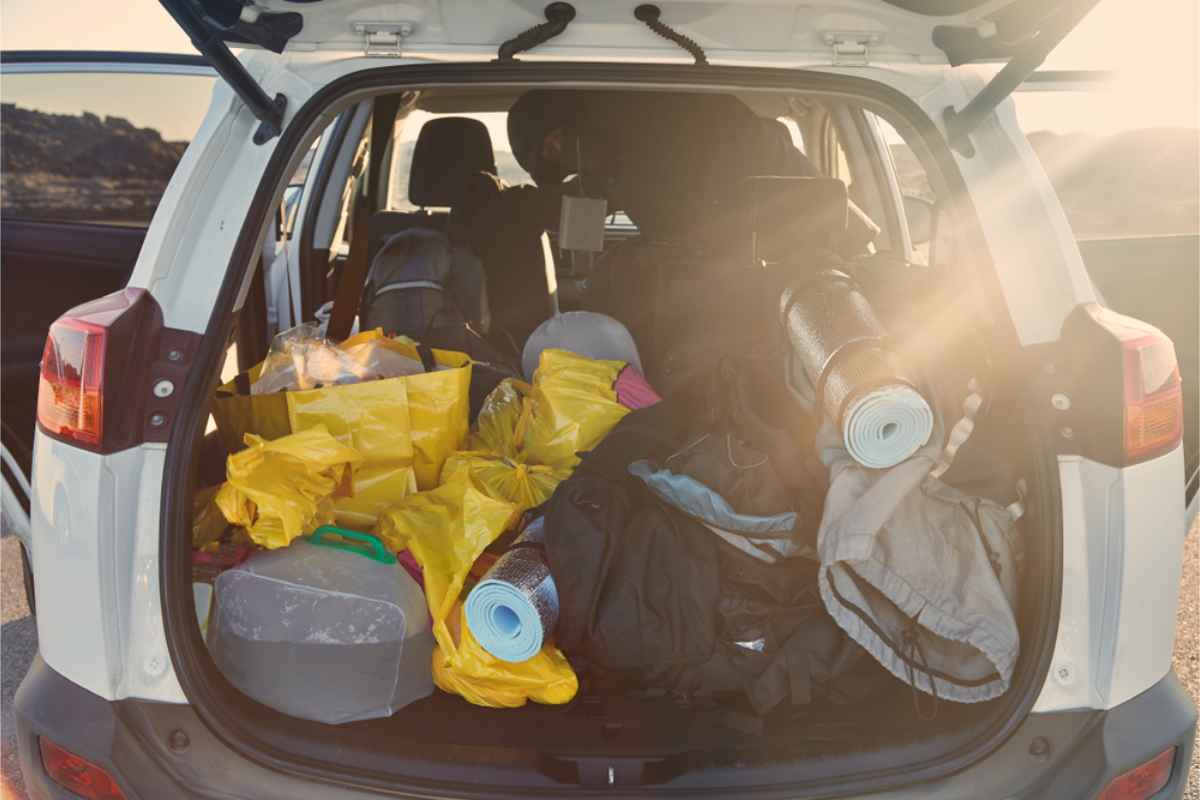
Camper Essentials: Heating, Cooking, Charging
Lucky for you, your rental agent would’ve taken care of most of these already. However, this is a friendly reminder to ask your rental agent about the heating and insulation in your camper (you don’t want to pay for the privilege of freezing your bum off). Also, inquire about the cooking facilities in your camper. If you want to take advantage of the chance to cook your own budget-friendly meals, you’ll need the right equipment.
Then, something many don’t know about Iceland is that the cold can deplete the battery life of your essential electronic devices quicker than you can say “glacier.” So, ensure you bring all your cables and chargers (including a car charger) as well as power banks to keep all your devices juiced up.
Apps and Tools for Driving and Camping
We have already mentioned a few helpful sites and apps, but we’ve compiled a quick referencing overview below:
- Vedur – Weather updates and forecasts.
- Umferdin – Road condition statuses and updates.
- SafeTravel – Real-time information and alerts about everything Iceland to ensure your safe travels.
- Google Maps – The only navigational app that truly “gets” Iceland.
- Tjalda – To find a campsite near you.
- Parka – To find parking spots, pay parking fees, and toll fees.
- Camping Card – For access to various campsites across the country for a family of 2 adults and up to 4 kids for 28 days. You also get additional discounts on refuels.
- Reykjavik Card – To further capitalize on all the savings you can get on the island. The Reykjavik Card gives you many special deals and prices on entrance fees to famous attractions, landmarks, and museums, as well as on meals and drinks, tours, and much, much more.

Safety Tips for Driving in Iceland in May
The following tips and advice will ensure you have a safe and memorable trip to Iceland in May:
- Always park against the wind (whether in a parking lot or at a campsite), and always keep a tight grip on car doors when opening and closing them. You never know when a sudden gust can cause some damage, and you don’t want to spend your vacay schlepping around with insurance claims.
- Keep your road trip itinerary flexible. This is easy to do in a camper with no strict check-in or out times to adhere to. By keeping things flexible, you not only ensure that small mishaps don’t entirely derail your trip, but you also keep yourself open to impromptu experiences and sights along the way.
- Always ensure that you stay on clearly marked roads, paths, and trails. This is to protect our fragile ecosystem as well as keep you safe. DIYing your own “road less traveled” can result in you getting stuck, plunging through one of our Puffin burrows (they make their homes below ground), or getting your tires melted off after driving into a hot spring (and not the kind you can take a dip in).
- We already mentioned Iceland’s hefty fines, and if you don’t respect our local rules and speed limits, you’ll be racking these up quicker than a collector with antique collectables. Some of the road rules you’ll need to remember are:
- Keep your headlights on 24/7 when driving, whether it’s night or day.
- Stay alert and watch out for any of our free-roaming wildlife that suddenly wants to cross the road (they don’t just do it where there’s a road sign warning).
- Everyone in the camper must have their seatbelts on the moment the vehicle begins to move.
- Strictly adhere to Iceland’s speed limits (which may not be what you’re used to back home). They will be clearly indicated by signs along the road.
- The first vehicle to reach a single-lane bridge should be the one to cross first.
Is May the Right Time for a Camper Adventure in Iceland?
For most, it will be a resounding YES!! After reading our guides. With perks such as nice weather, plenty of daylight hours, excellent road conditions, affordable pricing, exciting things to do, and breathtaking scenery, visiting Iceland in May certainly hits that Goldilocks sweet spot.
So, without further delay, pack those layers, plan your route, rent the camper in Iceland, grab the camera, and hit the road. Driving in Iceland in May has never been made this comfortable and convenient!

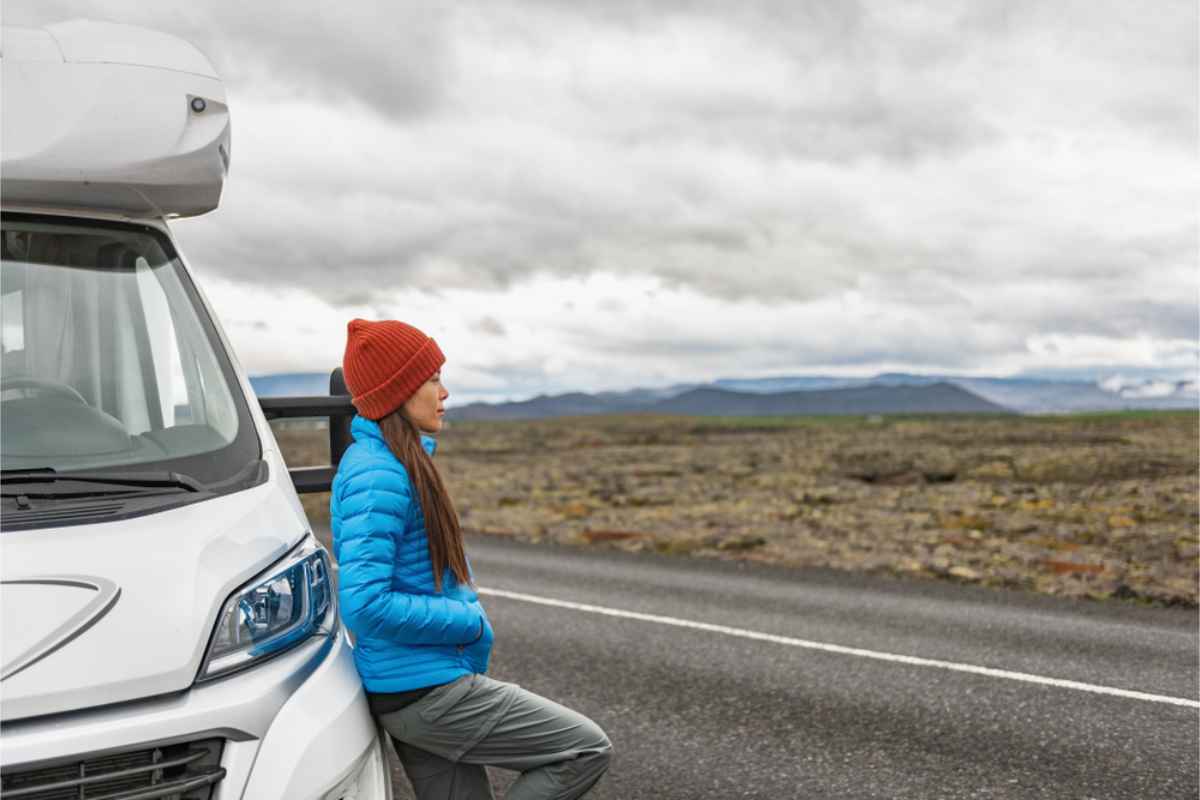
 By
By


